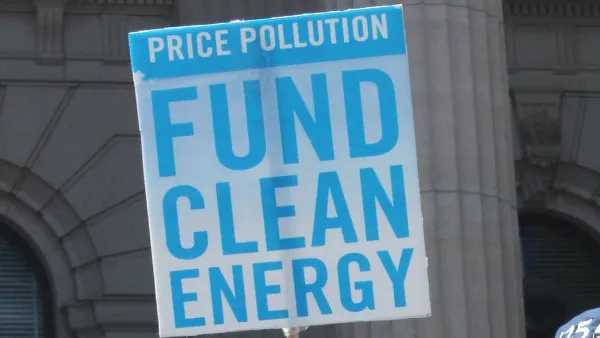Construction and permitting for large solar facilities like those located in the desert at the border of California and Nevada is nearly non-existent. Uncertainty over expiring tax credits is only partly to blame.

The bloom is off the rose for utility-scale solar projects, just five years after the Obama Administration made a big push for such projects as part of a nationwide renewable energy program. The lack of utility-scale projects stands in stark contrast to exponential growth in distributed, roof-top solar installations.
“Of the 365 federal solar applications since 2009, just 20 plants are on track to be built. Only three large-scale solar facilities have gone online, two in California and one in Nevada. The first auction of public land for solar developers, an event once highly anticipated by federal planners, failed to draw a single bid last fall,” reports Julie Cart.
Blame for the lack of projects can be found in the sunset for the current investment tax credit, scheduled to drop from 30 percent to 10 percent at the end of 2016. The lack of investments is also a result of the initial success by utilities in meeting renewable portfolio standards in states like California: “...utilities in many states are on track to meet those requirements, giving them less incentive to buy higher-priced solar energy —especially as a steep decline in natural gas prices has cut the cost of power from gas-fired generators.”
FULL STORY: After a building boom, solar energy's prospects now aren't as sunny

National Parks Layoffs Will Cause Communities to Lose Billions
Thousands of essential park workers were laid off this week, just before the busy spring break season.

Retro-silient?: America’s First “Eco-burb,” The Woodlands Turns 50
A master-planned community north of Houston offers lessons on green infrastructure and resilient design, but falls short of its founder’s lofty affordability and walkability goals.

Delivering for America Plan Will Downgrade Mail Service in at Least 49.5 Percent of Zip Codes
Republican and Democrat lawmakers criticize the plan for its disproportionate negative impact on rural communities.

Test News Post 1
This is a summary

Test News Headline 46
Test for the image on the front page.

Balancing Bombs and Butterflies: How the National Guard Protects a Rare Species
The National Guard at Fort Indiantown Gap uses GIS technology and land management strategies to balance military training with conservation efforts, ensuring the survival of the rare eastern regal fritillary butterfly.
Urban Design for Planners 1: Software Tools
This six-course series explores essential urban design concepts using open source software and equips planners with the tools they need to participate fully in the urban design process.
Planning for Universal Design
Learn the tools for implementing Universal Design in planning regulations.
EMC Planning Group, Inc.
Planetizen
Planetizen
Mpact (formerly Rail~Volution)
Great Falls Development Authority, Inc.
HUDs Office of Policy Development and Research
NYU Wagner Graduate School of Public Service




























